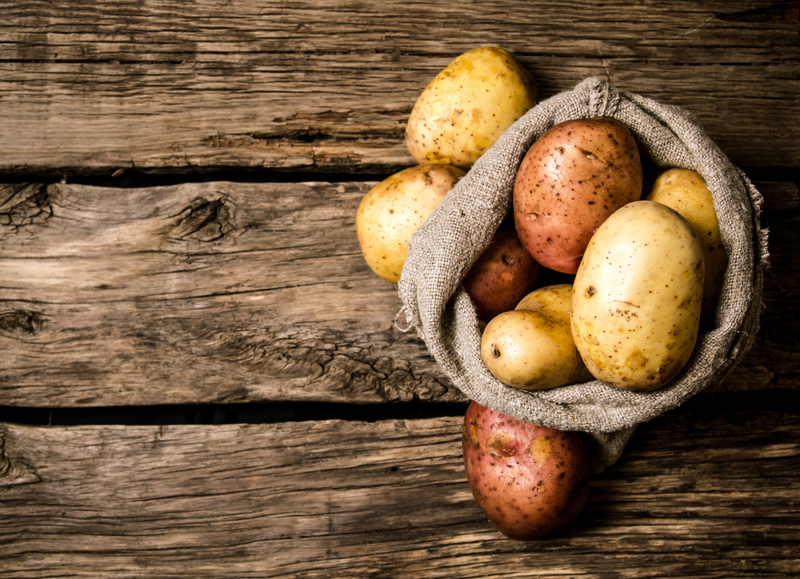How to Ensure Your Garden Thrives Despite Winter
Posted on 24/05/2025
How to Ensure Your Garden Thrives Despite Winter: Ultimate Guide for a Flourishing Cold-Season Garden
As the temperatures drop and the first frost bites at your garden's edges, it's easy to think that your gardening efforts must go dormant, just like your plants. But what if you could defy the odds? Ensuring your garden thrives during winter isn't just possible--it's achievable with the right strategies and care. In this comprehensive guide, we'll unravel the best practices for maintaining a flourishing winter garden, protecting plants, and even encouraging some growth during the coldest months.
Understanding Winter's Impact on Your Garden
Before diving into how to have your garden thrive despite winter, it's vital to understand what winter brings. Cold temperatures, frost, wind, and reduced sunlight all pose challenges to your garden's life cycle. Yet, nature has equipped many plants to withstand these conditions. Your job as a gardener is to support them through smart preparation and winter gardening techniques that minimize stress and maximize health.
Challenges Faced by Winter Gardens
- Frost: Can damage leaves, stems, and roots, especially for sensitive species.
- Reduced Sunlight: Shorter days mean less photosynthesis and slower growth.
- Cold Winds: Dry out plant tissues and accelerate water loss.
- Waterlogging or Drought: Either extreme can be common due to fluctuating precipitation and frozen ground.
By understanding these hurdles, you can tailor your approach to ensure your winter garden flourishes, setting the stage for spring's eventual revival.

1. Prepare Your Garden Before Winter Arrives
The secret to a thriving winter garden lies in preparation. Start early in the autumn to give your garden the best defense against winter's extremes.
Clean Up and Remove Debris
- Clear fallen leaves and dead plant material. These can harbor pests and diseases and prevent air circulation.
- Compost healthy plant matter: Use it to enrich soil for spring.
- Discard diseased material: Avoid spreading pathogens.
Enrich Your Soil
- Add organic matter like compost or well-rotted manure to improve soil structure and provide nutrients.
- Aerate compacted soil: Use a garden fork to promote drainage and root health.
Mulching for Winter Protection
- Apply thick mulch (straw, bark, leaves) around perennials, shrubs, and fragile plants.
- Mulch regulates soil temperature and moisture, insulates roots, and reduces freeze-thaw cycles.
2. Select the Right Plants for Winter Gardening
Plant selection is crucial if you want your winter garden to thrive. Some plants are naturally more resilient to cold weather, while others can be grown indoors until the frost has passed.
Hardy Perennials and Shrubs
- Conifers: Pines, spruces, and junipers maintain visual interest all winter.
- Winter-flowering shrubs: Witch hazel, winter jasmine, and mahonia offer color even in the cold.
- Hellebores: Also known as Christmas roses, these bloom in the depths of winter.
Vegetables and Herbs for the Cold
- Cold-hardy vegetables: Kale, Brussels sprouts, spinach, and leeks can survive and even thrive in winter.
- Winter herbs: Parsley and thyme are tough enough to weather frosty conditions.
Planning your crops and ornamental plants based on your local hardiness zone will maximize success and help your garden survive and prosper during winter.
3. Protecting Your Plants from Extreme Cold
Even the toughest garden can suffer in a harsh winter. Knowing how to shield your plants from severe cold spells is crucial for thriving through the season.
Frost Protection Techniques
- Cover with fleece, burlap, or horticultural fabric: These provide a protective layer against frost and windburn. Secure covers at night and remove during the day for sunlight exposure.
- Use cold frames and cloches: These mini-greenhouses are invaluable for vegetable patches and tender seedlings.
- Build windbreaks: Erect barriers of netting or hedges to reduce wind chill on sensitive areas.
Protecting Potted Plants
- Move pots to sheltered locations: Place them against a house wall or inside a garage or shed.
- Insulate containers: Wrap them in bubble wrap, burlap, or straw to prevent roots from freezing.
4. Watering Wisely During Winter
One common misconception is that gardens don't need much water in winter. While growth slows, plants still need adequate moisture to survive, particularly evergreens and those under shelter.
Tips for Effective Winter Watering
- Water during mild spells: Choose a day when temperatures are above freezing to prevent ice damage.
- Avoid overwatering: Roots can rot if soil stays saturated in cold temperatures. Ensure good drainage.
- Focus on evergreens and new plantings: These are particularly prone to winter desiccation.
5. Harnessing Light and Creating Microclimates
Maximizing sunlight and creating sheltered environments can make the difference between winter survival and winter thriving for your garden.
Maximizing Sun Exposure
- Trim overhanging branches: Allow as much winter sunlight to reach your beds as possible.
- Use reflective mulches: White stones or plastic reflect light and heat onto plants.
Creating Microclimates
- Group plants together: They can share warmth and shelter, reducing exposure to the elements.
- Use south-facing walls: These absorb and radiate heat, offering a warmer microclimate for sensitive plants.
6. Indoor and Greenhouse Gardening in Winter
For those determined to see green shoots all winter, indoor gardens and greenhouses offer ideal conditions to keep growing despite external cold.
Greenhouse Tips for Thriving Gardens
- Keep it ventilated: Avoid mold and rot by airing out on sunny days.
- Monitor temperatures: Use heaters or insulation (bubble wrap) if needed to keep conditions above freezing.
- Grow winter crops: Lettuce, spinach, radishes, and herbs flourish in protected environments.
Indoor Gardening Ideas
- Grow windowsill herbs: Basil, parsley, and chives can prosper indoors with adequate light.
- Try microgreens: Fast-growing and packed with nutrients, these are perfect for small spaces.
- Hydroponic kits: Enable year-round indoor harvests of greens and vegetables.
7. Preventing and Managing Winter Garden Pests
Winter doesn't mean your garden is free from pests. Mice, voles, and certain insects may take shelter in your beds or mulch. Maintaining vigilance against these invaders is vital.
Winter Pest Control Strategies
- Keep sheds and greenhouses tidy: Remove debris where rodents might nest.
- Avoid heavy mulch near stems: Mice and voles burrow and chew at bark under thick mulching.
- Check for hidden eggs or larvae: Aphids and slugs sometimes overwinter in garden debris.
8. Winter Pruning and Maintenance
Smart pruning during winter can set the stage for vigorous spring growth.
Best Practices for Pruning in Winter
- Prune deciduous trees and shrubs when dormant to improve structure and reduce disease.
- Remove dead, diseased, or crossing branches.
- Shape ornamental trees: Enables light penetration and strong growth in spring.
9. Planning Ahead: Prepare for Spring While Protecting Your Winter Garden
Winter isn't just a time to defend your garden; it's also a wonderful opportunity to plan next season's garden success.
- Order seeds and plan crop rotation.
- Sharpen and maintain tools.
- Monitor and record what did well this winter: Use these insights for future planting.

Frequently Asked Questions: Garden Thriving in Winter
Can I plant anything during winter?
Yes! Some cold-hardy vegetables, bulbs, and even certain trees can be planted in winter. Success depends on timing, climate, and soil preparation.
What's the best mulch for winter protection?
Straw, shredded leaves, bark chips, or pine needles are excellent choices for insulating plant roots and providing organic matter.
Is it necessary to water plants in freezing temperatures?
It depends: If the ground isn't frozen and rainfall is insufficient, plants still need moisture. Water during mild spells and avoid waterlogged roots.
How do I prevent rodents from attacking my winter garden?
- Clear debris where they may nest.
- Limit thick mulch around stems and tree bases.
- Install barriers or traps where infestations are likely.
Conclusion: Nurture Your Winter Garden for Year-Round Beauty and Bounty
Learning how to ensure your garden thrives despite winter is a blend of preparation, care, and choosing the right strategies. By protecting plants, improving soil, and understanding your climate, you'll enjoy a vibrant, productive garden even in the coldest months. Embrace winter as an essential phase of your gardening schedule--not as an obstacle, but as an opportunity to build resilience and set the foundation for thriving growth when spring returns.
Remember, with the right approach, your garden can do more than just survive winter--it can truly thrive! Happy winter gardening!



